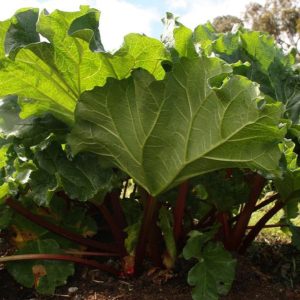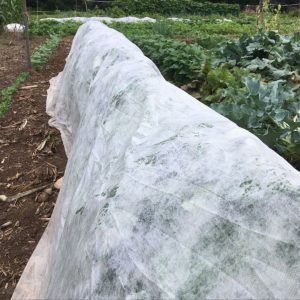As the vibrant days of summer gradually give way to the crisp, cool air of fall, many gardeners might feel a sense of melancholy. The shorter days, the rustling of leaves as they turn from green to shades of amber and crimson, and the first hints of frost all signal the winding down of the growing season. It’s easy to view autumn as the beginning of an inevitable decline into the cold, dark winter months, where the only greenery comes from the houseplants that thrive indoors. For those who live outside of perpetually warm climates, fall can seem like a farewell to the lush abundance of the garden, a time when the fruits of your labor start to fade.
However, while the summer garden may be retreating, autumn brings its own set of joys and opportunities for gardeners. Rather than seeing this season as an ending, think of it as a time of transition and preparation—one that is just as vital to the health and beauty of your garden as the warmer months. The cool, crisp air and the softened light create a perfect environment for spending time outdoors, caring for the final blooms of the year, and laying the groundwork for the garden of next spring.
Fall is, in fact, a pivotal moment in the gardener’s calendar. It’s a time when you can savor the last bursts of color from late-blooming flowers like asters, chrysanthemums, and dahlias, which often reach their peak as the days grow shorter. These hardy plants offer a final flourish before the first frosts arrive, providing a burst of beauty that can be all the more appreciated against the backdrop of changing leaves.
PREPARE THE GARDEN FOR SPRING

As the final days of this year’s garden approach, it’s easy to feel a twinge of sadness at the thought of bidding farewell to the vibrant blooms and lush foliage that have brought so much joy throughout the warmer months. However, the close of one growing season marks the beginning of an important new chapter in the life of your garden. Fall is the perfect time to start planning for the coming spring, ensuring that your garden not only survives the winter but thrives in the new year.
One of the most rewarding tasks to undertake during the fall is the planting of spring-blooming bulbs. These hardy little powerhouses spend the cold months nestled in the soil, preparing to burst forth in a riot of color and fragrance as soon as the snow melts. Some of the earliest spring flowers, such as snowdrops and crocuses, are best planted now. These delicate blooms are among the first to poke through the thawing ground, heralding the arrival of warmer days. Planting them in the fall ensures that they will be ready to greet you as soon as winter’s grip begins to loosen.
But don’t stop there—tulips, daffodils, hyacinths (both grape and full-sized), and squill are all popular spring bulbs that should also be planted before the first frost. Imagine your garden in early spring: bright pink tulips standing tall, cheerful yellow daffodils swaying in the breeze, and deep purple hyacinths filling the air with their sweet, heady fragrance. These flowers create a symphony of scent and color that not only delights the senses but also serves as a warm welcome to the new growing season. Another beautiful addition to the spring garden is Lily of the Valley, with its dainty white bells that nod gracefully above long, elegant leaves. Their unique shape and sweet fragrance are lovely accents that add a touch of classic charm to any garden bed.
By investing a little time in planting these bulbs now, you set the stage for a breathtaking display of vivid colors and pleasing aromas that will greet you once the snow has melted and the earth begins to awaken. The reward for your fall efforts will be a garden that bursts into life with a rich palette of colors and textures, lifting your spirits after the long winter months.
While fall is the time to plant spring-blooming bulbs, it is also the season to carefully dig up and store summer-blooming bulbs that won’t survive the winter in the ground. Varieties such as dahlias, hardy begonias, colchicum, and gladiolus should be lifted from the soil and stored in a dry, frost-free environment until spring. Keeping these bulbs in peat moss in a well-ventilated closet is ideal, as it provides the slightly moist conditions needed to prevent them from drying out while avoiding the excess moisture that can lead to rot. Many bulbs, like lilies, oxalis, and ranunculus, are hardy enough to stay in the ground in warmer climates but may need to be brought indoors in colder regions. If you’re unsure whether your summer bulbs can weather the winter outdoors, it’s safer to dig them up and store them until the ground thaws in spring. Checking your USDA hardiness zone can provide guidance on whether your bulbs can stay in the ground or need to be stored indoors.
In addition to managing your bulbs, fall is also an excellent time to divide spring-flowering perennials. Perennials such as bleeding hearts, primroses, coral bells (also known as alumroot), irises, and peonies can benefit greatly from being divided in the fall. Dividing these plants not only rejuvenates them but also gives them ample time to settle into their new locations and store up energy during the dormant season. Using a spading fork or trowel, carefully separate clumps of knotted roots, then replant the divisions and water them thoroughly. By dividing perennials in the fall, you ensure they will be ready to put on a spectacular show of blooms in the spring. If you wait until just before they flower, the disturbance could prevent them from blooming, so now is the ideal time to take an overgrown perennial and turn it into several smaller, thriving plants. The result is a garden filled with even more of the plants you already love, ready to dazzle you when the growing season returns.
So, while it may be tempting to view the arrival of fall as the end of the gardening year, it’s actually a season of opportunity. By taking the time to plant, store, and divide your garden treasures, you’re not only preserving the beauty of your garden but also enhancing it for the future. The efforts you make now will pay off in the form of a garden that comes back stronger, more vibrant, and more beautiful than ever when spring finally arrives.
PROTECT THE GARDEN FOR WINTER
As the first frost approaches, it’s essential to prepare your garden for the winter months ahead. Begin by deadheading any remaining spent blooms, especially on late-flowering plants like asters and chrysanthemums. However, there’s no need to completely cut back the foliage from your perennials. Leaving it in place provides shelter and sometimes even a food source for wildlife during the colder months.
If you live in a colder climate, which includes much of the U.S., protecting your perennials from freezing is crucial. Mulching your garden is one of the best ways to do this, and fortunately, you likely have an excellent source of free mulch right in your yard: fallen leaves. Rake up the leaves shed from deciduous trees and use them as a protective blanket over your garden beds and borders. For best results, first mow the leaves with a mulching mower to chop them up before spreading them over your plants. This method helps prevent moisture from becoming trapped under the leaf mulch, reducing the risk of rot and damage to your plants.
Adding compost to your leaf mulch is another great idea. The compost will nourish the soil throughout the winter, ensuring your plants have a healthy foundation for vigorous growth in the spring. Don’t forget to give your roses some special attention as well. Cover them with rose cones, which can be found at most garden centers, to ensure they survive the winter unscathed.
In summary, autumn doesn’t have to be a time of sadness for gardeners. By taking steps to prepare and protect your garden, you’re helping to sustain the life cycle of your plants. Planting spring-flowering bulbs and dividing perennials now will reward you with a colorful display of blooms as soon as spring arrives. This process of planning and creating your spring garden offers a comforting sense of continuity as the current growing season comes to a close. Meanwhile, the perennials resting comfortably under their blanket of compost and mulch will thank you with a vigorous display of vibrant blooms next year. So, savor these last few months in your garden this year, and look forward to the beauty that the coming year holds.
Growing Great Crops in the Fall
- Salad greens, like lettuce, arugula, and spinach, generally thrive in the cooler temperatures of fall and spring. Growing these vegetables during the hot summer months often results in tough, weedy textures and grassy flavors—neither of which are ideal for salad greens. Fortunately, these vegetables grow quickly, allowing you to plant seeds from early to late fall and enjoy a continuous harvest of tender, flavorful greens throughout the autumn season. This extended growing period means you can enjoy fresh, homegrown salads even as the days grow shorter.
- Green beans are another excellent choice for fall gardening. If planted in late summer, they can be harvested throughout the fall, providing a steady supply of crisp, delicious beans well into the cooler months. Green beans are relatively low-maintenance and can thrive in a range of soil types, making them an easy addition to your fall garden.Garlic and shallots are also well-suited to cooler weather. Plant these in early autumn to harvest before the first freeze, ensuring you have fresh, flavorful bulbs for your winter cooking. Alternatively, you can plant garlic and shallot bulbs just before the first freeze and cover them with a layer of hay or mulch. This bedding will protect the bulbs over the winter, allowing you to harvest them in early spring when the ground thaws. This method not only protects your bulbs from the harsh winter weather but also sets you up for an early spring harvest.
 Many herbs, such as sage, thyme, chives, and parsley, can survive well into autumn. These hardy plants can continue to provide fresh flavors for your meals until the first hard freeze of fall. Once the foliage on your herbs dies back, cut the plant off at ground level and cover it with several inches of hay or another type of mulch. This protective layer increases the chances that your herbs will return the following fall, giving you a head start on next year’s herb garden.
Many herbs, such as sage, thyme, chives, and parsley, can survive well into autumn. These hardy plants can continue to provide fresh flavors for your meals until the first hard freeze of fall. Once the foliage on your herbs dies back, cut the plant off at ground level and cover it with several inches of hay or another type of mulch. This protective layer increases the chances that your herbs will return the following fall, giving you a head start on next year’s herb garden.- Carrots are another vegetable that thrives in cooler weather. Plant them in late summer or early fall for a winter harvest. Carrots can tolerate light frosts, and the cooler temperatures can even enhance their sweetness. Depending on your climate, broccoli and cabbage are also good choices for late summer or early fall planting. These cool-weather crops can be harvested in October, providing a nutritious addition to your fall meals. Both broccoli and cabbage are rich in vitamins and minerals, making them a healthy choice for your fall garden.
- Depending on the climate in which you live, broccoli and cabbage may also be good choices to plant in late summer/early fall for harvest in October.
- Fall is an ideal time to plant hardy perennials, such as asparagus, rhubarb, and artichokes, which will return year after year. By planting these perennials in the fall, you give them time to establish their root systems before the ground freezes, leading to stronger growth in the spring. Perennials can be a rewarding addition to your garden, providing a reliable harvest with minimal effort in the coming years.
- Fall vegetable gardening is also an opportunity to prepare your garden for the following spring. One of the best ways to do this is by tilling the garden in the fall before the ground freezes. Tilling helps to loosen the soil, making it easier to work with in the spring. After tilling, rake up any fallen leaves from your yard and pile them on top of the garden area. Over the winter, these leaves will decompose, creating rich, organic compost that you can till into the soil in the spring. This natural compost will improve soil structure, enhance fertility, and promote healthy plant growth in the coming growing season.
- To maximize your fall harvest, use row covers to protect your plants from early frosts and extend the growing season. Lightweight, breathable fabric covers can be draped over crops like lettuce, spinach, and carrots to trap heat and maintain a stable growing environment. Row covers are especially useful in regions where the first frost can arrive unexpectedly, allowing you to continue harvesting fresh produce well into late fall.
- Rake up any leaves from your garden and pile them on top of the garden area after you have tilled the soil. Over the winter, these leaves will rot, making excellent compost come spring. Tilling the decayed leaf material into your soil in the spring will help create wonderful soil conditions for next year.
- In addition to planting vegetables, consider sowing cover crops in your garden during the fall. Cover crops, such as clover, rye, or winter wheat, help to protect the soil from erosion, suppress weeds, and add valuable nutrients back into the earth as they decompose. Planting cover crops in the fall creates a green mulch that improves soil health over the winter, ensuring your garden is ready for a productive spring.
By planning and preparing your fall garden thoughtfully, you can extend your growing season, enjoy a variety of fresh vegetables, and set the stage for a successful garden next spring. Whether you’re planting cool-weather crops, harvesting late-season vegetables, or preparing the soil for the winter, fall gardening offers a wealth of opportunities to keep your garden productive and vibrant well into the cooler months.

 Many herbs, such as sage, thyme, chives, and parsley, can survive well into autumn. These hardy plants can continue to provide fresh flavors for your meals until the first hard freeze of fall. Once the foliage on your herbs dies back, cut the plant off at ground level and cover it with several inches of hay or another type of mulch. This protective layer increases the chances that your herbs will return the following fall, giving you a head start on next year’s herb garden.
Many herbs, such as sage, thyme, chives, and parsley, can survive well into autumn. These hardy plants can continue to provide fresh flavors for your meals until the first hard freeze of fall. Once the foliage on your herbs dies back, cut the plant off at ground level and cover it with several inches of hay or another type of mulch. This protective layer increases the chances that your herbs will return the following fall, giving you a head start on next year’s herb garden.





